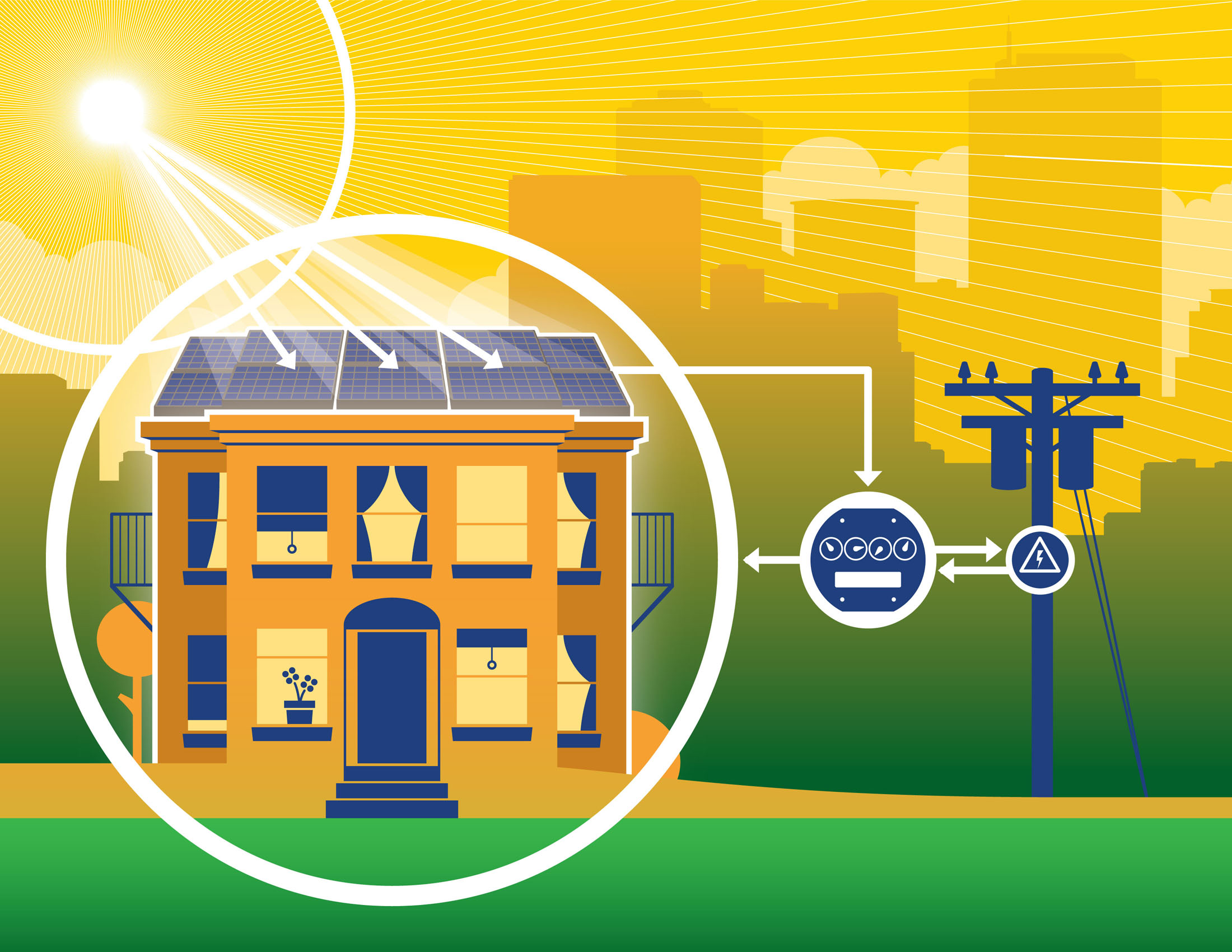How Net Metering Works
For NEM 2.0 or earlier system, please see below:
When your solar is generating more power than your building uses at that moment, you send the extra energy to the grid, and PG&E gives you credit for the value of that energy. Under net metering, the electricity your system exports to the grid (measured in kilowatt hours or kWh) is worth a certain amount of retail priced credits, which are applied to your bill. When your building needs more power than your system is producing at that moment, you draw on grid power. PG&E tracks the value of that energy. This allows them to calculate your “net” energy, which is how much energy your system sends to the grid and how much energy your home draws from the grid.
After your solar system is installed and passes inspection, you sign a Net Energy Metering (NEM) contract. You are now an energy producer, not just an energy consumer. You will still receive a monthly bill from PG&E but it will only include a minimum monthly service charge, plus any additional gas or non-energy charges. You will also receive a monthly Net Metering Statement and an annual True-Up Statement – and this is where you will see the value your solar system produces.
Your monthly Net Metering Statement shows the excess power your solar system sends to the grid and the “net” consumption, the total power your home pulls from the grid. These credits and charges are carried forward every month for 12 billing cycles. The final amount is reconciled on your annual True-Up Statement, which occurs on the anniversary of your system’s interconnection to PG&E.
Your True-Up Statement reconciles all the cumulative energy charges, credits and any compensation for the 12-month period starting on the date your system received a Permission to Operate from PG&E. If you have a balance due after all charges and credits are reconciled, that amount will appear on the last PG&E bill of your 12-month billing cycle. Any remaining credits will be reset to zero before beginning your new 12-month billing cycle.
For more on how to read your PG&E solar bill, click here. If you have questions regarding your statements, please call PG&E’s solar department directly at (877) 743-4112.
- Podcast: How Net Metering Works
To understand more about how net energy metering works, here’s a helpful podcast. - Solar Net Energy Metering Webinar
PG&E offers a free educational webinar on the details of net metering.
Community Choice Aggregation Programs
For many of us in PG&E territory, we also belong to a Community Choice Aggregator, or CCA.
In San Francisco, it’s CleanPowerSF. In much of the East Bay, it’s East Bay Community Energy. In the North Bay, it’s Marin Clean Energy.
CCAs manage the generation portion of electricity, while PG&E manages distribution and billing.
Generally, CCAs provide better retail credit pricing for solar generation, however, if you have not built enough credits to offset usage, CCAs will bill you monthly for net usage overage, rather than through an annual True-Up bill.

